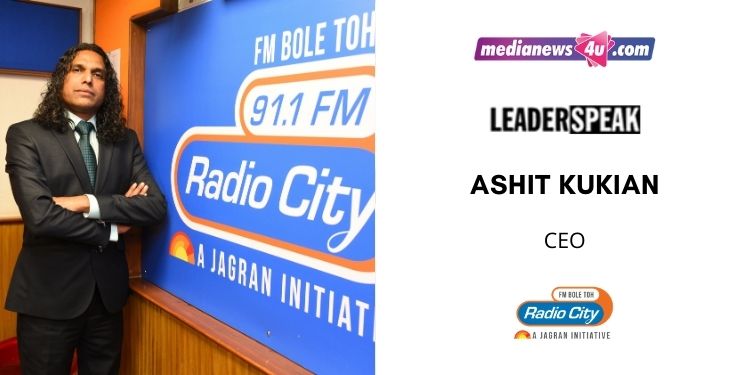Ashit Kukian the Chief Executive Officer of Radio City, India’s leading radio network. In his present capacity, Ashit is responsible for building effective teams, streamlining operations and strategy across the organization, with the objective of enhancing market share and driving sustainable growth. Ashit brings more than two decades of cross functional media, entertainment and management experience to the role to drive continuous business improvement and help exceed the revenue and profitability objectives.
In the part one of this Two-Part Leaderspeak with Ashit Kukian, CEO, Radio City speaks to us on his professional journey, the Radio business in today’s time and challenges faced during this pandemic and lockdown
20+ years in the Media Industry, your journey and the changes the industry has gone through?
I started my career with the Times Group way back in 1987 and worked with them for good 14 years across various mediums like print & TV. There was a time when Times of India used to hold maximum revenue, as far as the industry was concerned. It was a different era altogether. A large portion of my career was with Femina and Filmfare, and events were a crucial part of the whole thing as Femina response used to handle the events till 2000. When ENIL got formed in 2001/2002 all the Femina events was handled by ENIL along with the Response team.
With Times it has been a long journey for me. Then, Times of India had a small A5 size entertainment magazine called E – Times. From thereon, the group went on to launch Metropolis, Bombay Times and Mumbai Mirror. Later, they even introduced the television division with Zoom. Practically, I was a part of the entire ecosystem within Times and it was a great experience. From Times I moved on to Radio City in 2005. I started my journey, when the radio channel had 4 radio stations and have seen it grow to 20 stations. I was also there when the channel got Mantra on board. After my stint with Radio City, I went back to Times, this time in the television division of the business, that grew from a single channel television to a network of news channels and a whole lot of English entertainment channels.
I had a short stint with ITV network and was back again with Radio City, so it has been a complete circle and great learning experience. Having seen a dominant print medium in Times and now seeing a highly competitive medium in the last one year or so, it has been a wholesome journey and I have cherished every moment of it. I think I was blessed to work with some of the best people in the industry and it has been a great journey overall.
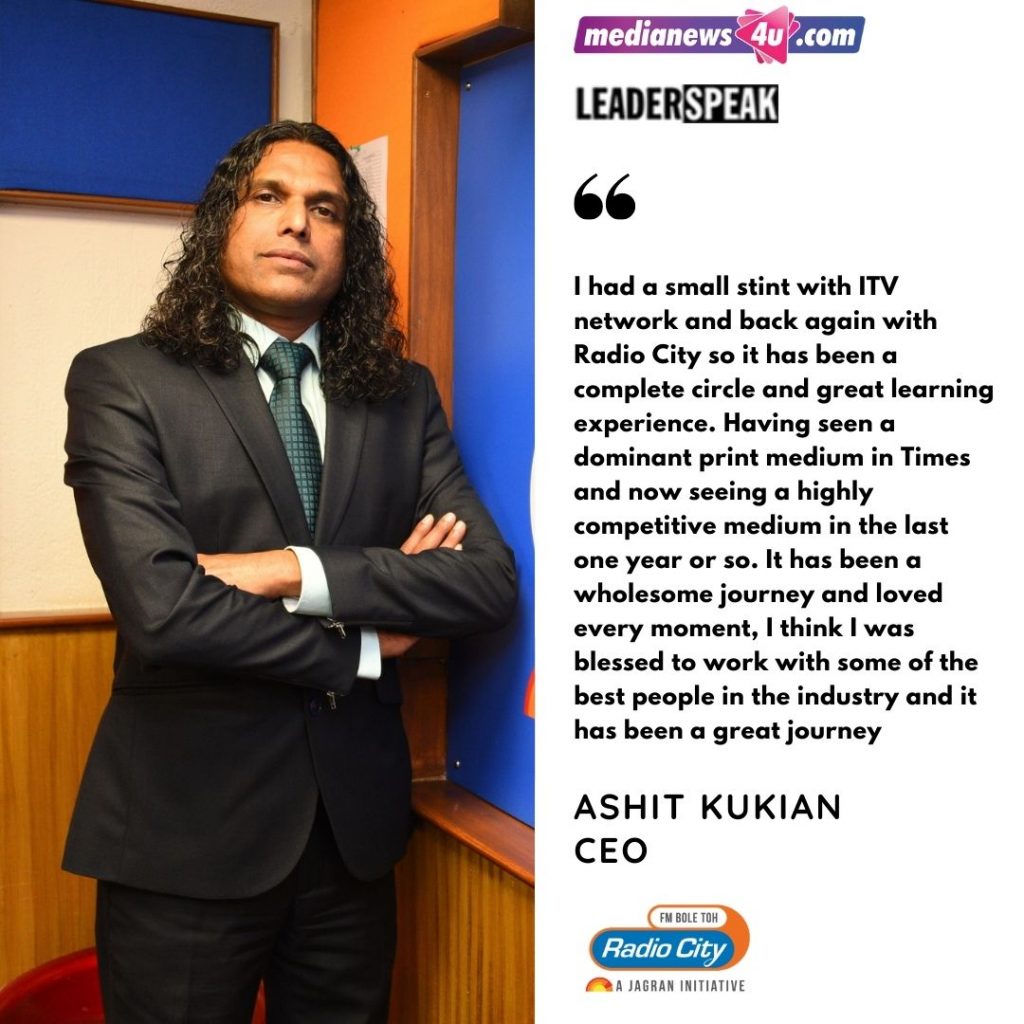
From launching Zoom to now running radio, how are the mediums different?
One, I do not look at these as mediums, like one of my ex bosses would say, I don’t suffer from format myopia. I look at each medium from the audience delivery perspective. Talking about Zoom, it was launched as one of its kind premium lifestyle and entertainment channel. Right from the look of Zoom to its launch and that too coming from the house of Times, it was a big event at that point in time.
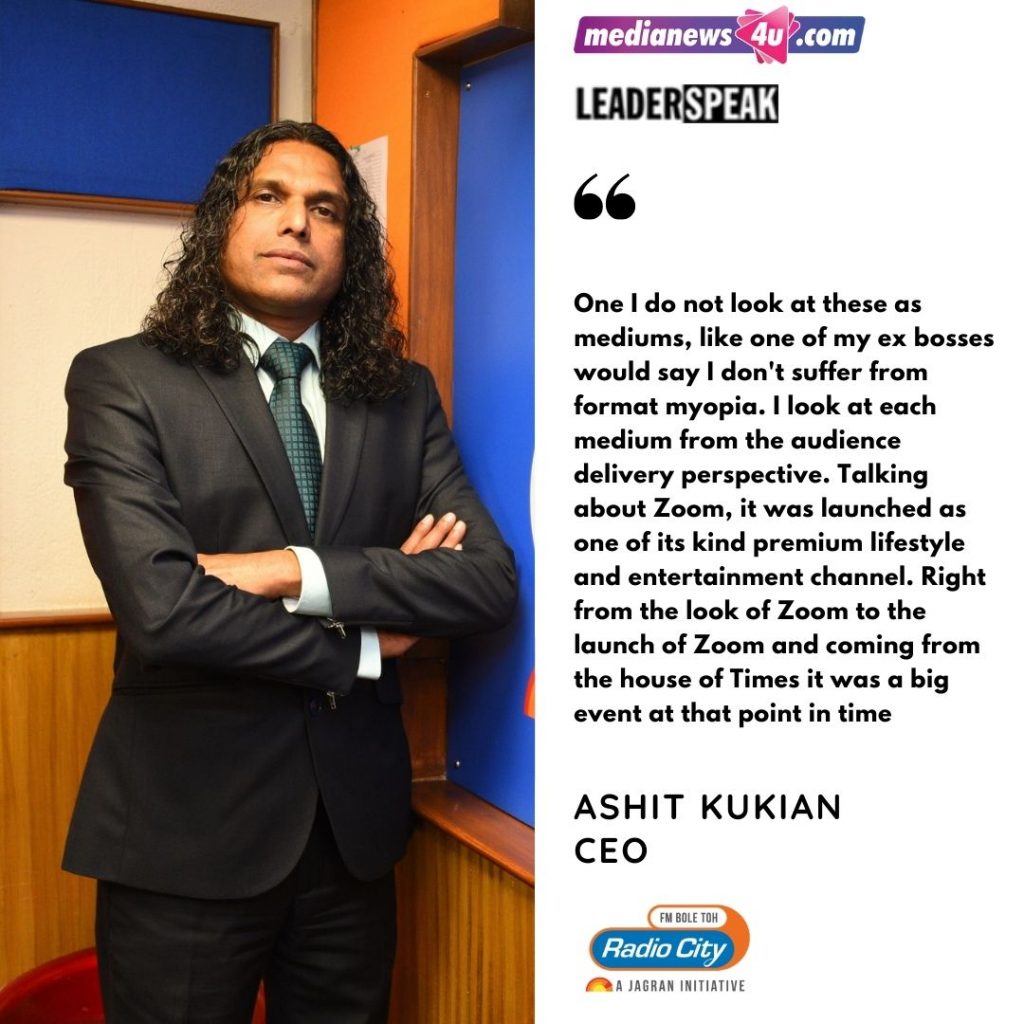
After 14 fruitful years, I moved into Radio. That was the time when Radio was expanding in both, its geographical reach, as well as its importance in media as far as brands were concerned. It came naturally, like I said when I moved from print to television, the portfolio I was handling at print was 10 times bigger. From Zoom when I moved to radio similarly, the revenue was more or less equivalent because it was just a 4 stations network then. I went on the journey of 4 to 7 to 11, to 20 with huge learnings and understanding the importance of local audiences that we are talking about. The reach that Radio created, was largely been set by the literacy challenge due to it being a massy medium which allows you to expand to the nooks and corners. From then to now in my second stint there has been a lot of learnings, a lot of exposures. Every day, every month or quarter there is something new happening and something new to do and learn. And I think that has kept me going. Like I said, close to 25 years and it feels like I have just joined media and I am still learning.
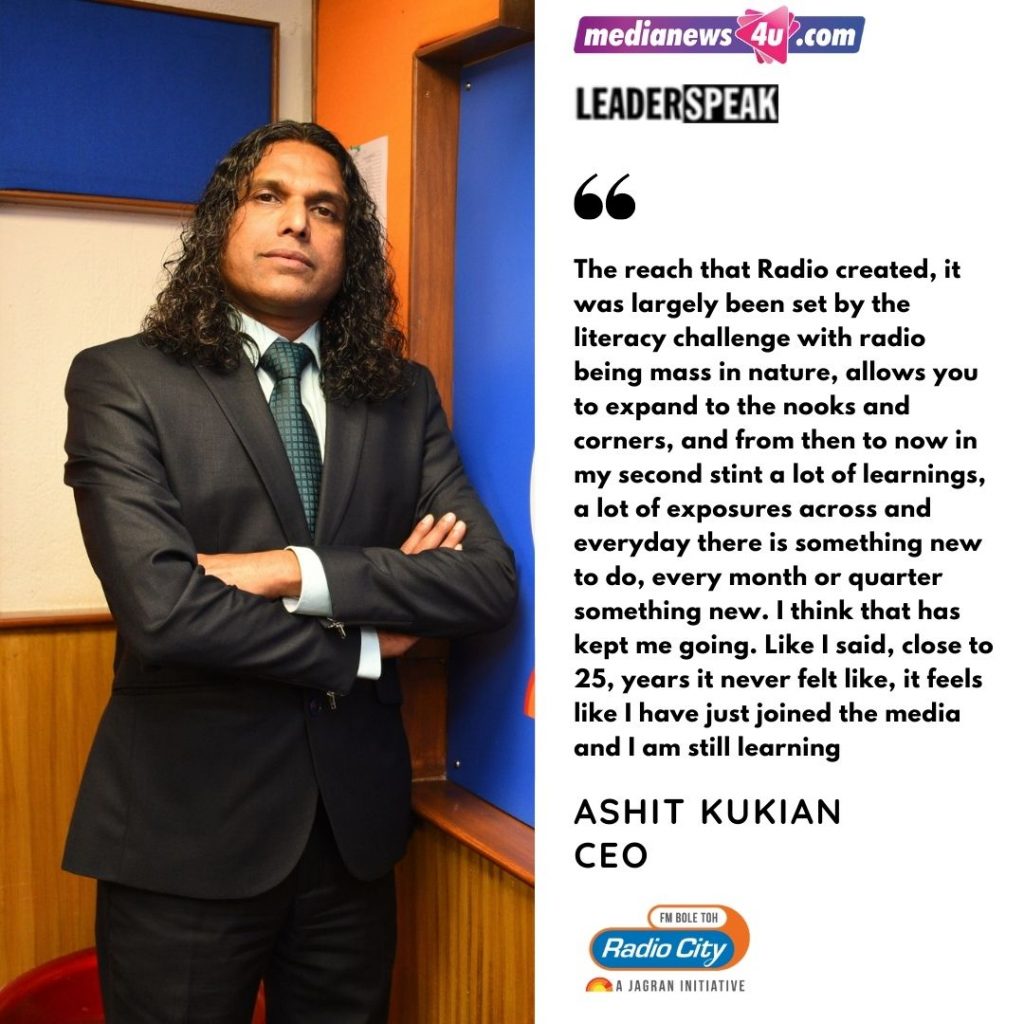
In your second stint at radio how have you seen the medium grow?
When I left, it was a 20 stations network and phase 3 was just about to happen. On my return the phase 3 was completed, there were dual stations, multiple frequencies and we ourselves expanded our geography from 20 to 39 stations. We saw competition doubling up, some of them as much as 70+ stations, from a geographical perspective, there was a huge change in the reach of radio. The reach and the importance of radio in media, in terms of planners, buyers and client’s mindset became an integral part of the ecosystem when it came to pitching advertisements.
Now radio is more challenging as the economy had not been the way it was earlier. A lot of challenges are in terms of value proposition that you are giving to the clients and the rates that you are working across. Those were the new things that came in the second stint as far as radio is concerned and again balancing the act between the big stations, small stations was essential. When I left we had a larger set of big stations and even today I think we possibly have a larger set of bigger stations, and that has what worked well for us.
We are there in the most important advertising markets. That is why, while our numbers are limited in comparison to others, we believe our reach is as much as 70% to 80% of what others have. We feel happy to have made the right choice of stations, today in the tough times when you look at our P&L, we feel it was a prudent approach that has really helped us survive, and hence we are doing much better than the other players in terms of our bottom line services.
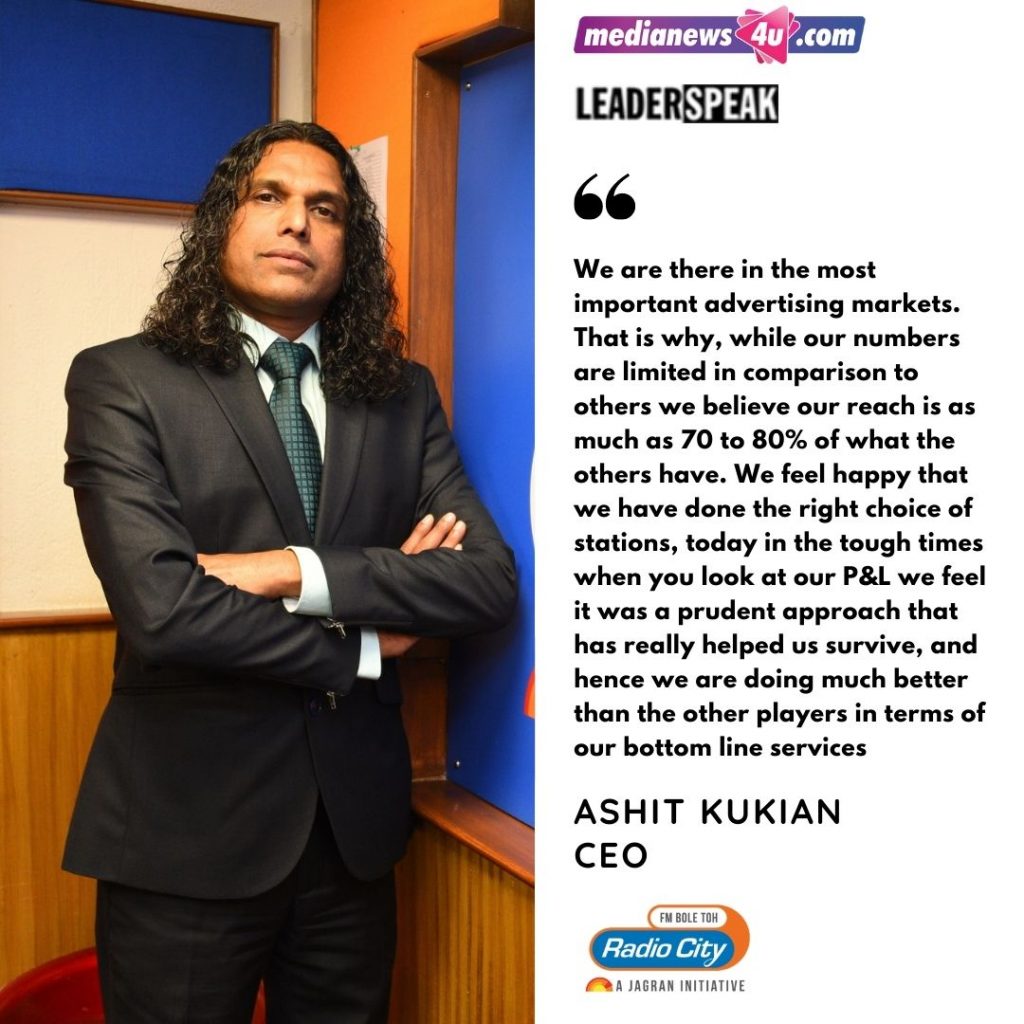
In this crisis what were the challenges?
The Covid-19 induced lockdown brought in a lot of changes in our style of functioning. First and foremost, we kick started with our IT team rallying to put all things in place to help us manage work efficiently from our homes. Once it was certain that this is going to be a long period, in the month of April, we started being judicious of all our costs to ensure that there is least pressure on our cash flows. While we are a cash surplus organisation, we were clear we will not dig into our cash reserves.
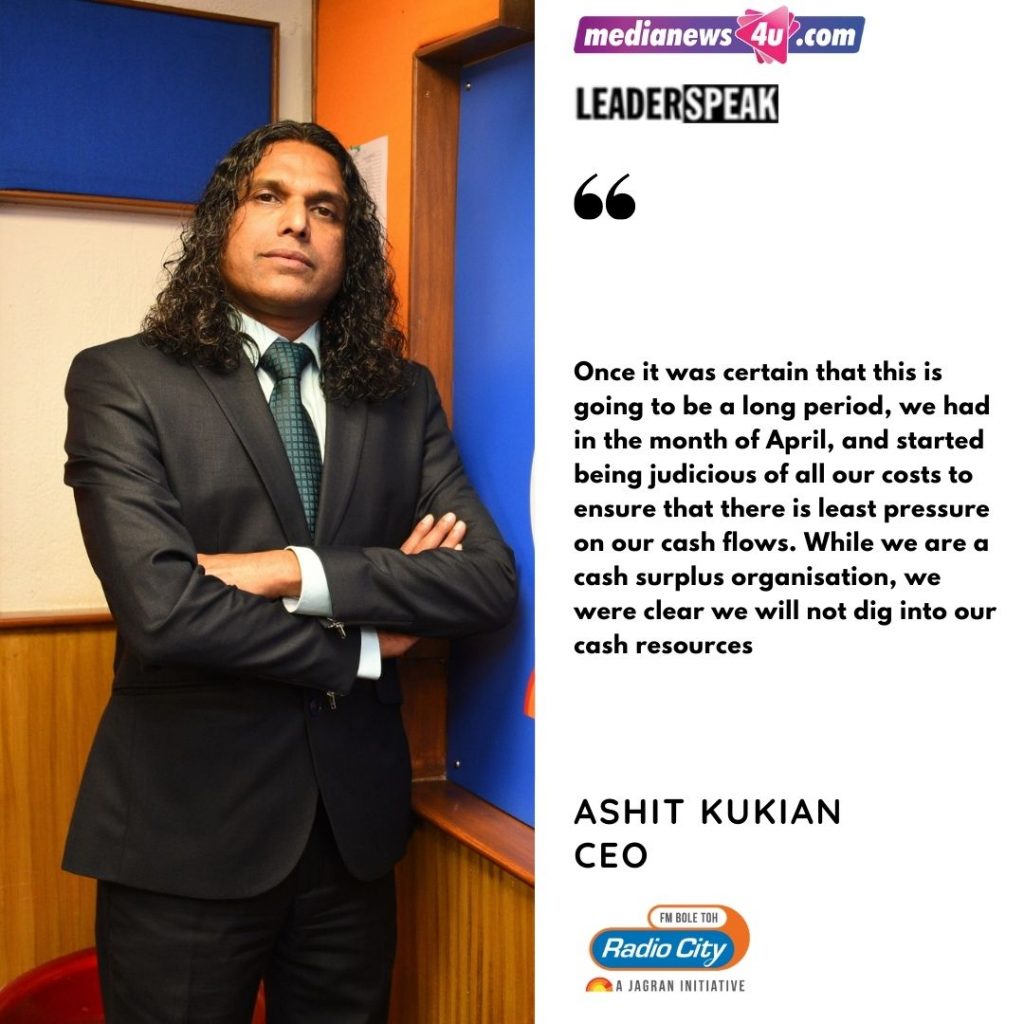
On the business front, we got our best minds together and kick-started various campaigns to not just keep our audiences entertained and engaged, but also provide them with help wherever required. In the last 4 months, we have initiated several innovative campaigns like ‘Concert From Home’ where we brought together more than 100 artists across 39 stations to entertain our listeners, “Corona Fighters Ko Salaam” through which we applauded our Covid-19 fighters, we also released a foot-tapping anthem ‘Ghar Se Na Niklenge’ to encourage people to stay home and flatten the Covid-19 curve. We started an initiative called “Radio City Bazaar” to encourage local businesses and small entrepreneurs, tied up with NGOs free of cost to help them give away food, groceries, and other essentials.
Additionally, we kick started the ‘Rag Rag Mein Positivity’ campaign, to go against the tide to spread positivity and proactively find information-led positive angles in an otherwise challenging situation. Another great campaign is of the fundraiser initiative ‘Dabbewale ka Dabba Bharo’ which encouraged Mumbaikars to come together and donate wholeheartedly for their beloved Dabbawalas, to support them through these tough times. Since the campaign’s inception in April, Radio City has witnessed Mumbaikars pour their love and support towards the Dabbawalas and has successfully collected approx. INR 21 lakhs towards the cause. Our initiative for the Dabbawalas was recognised by celebrities like Sanjay Dutt, Suniel Shetty and politician Aslam Shaikh, who had initiated another fundraiser for the benefit of Dabbawalas.
However, during this period we also saw a substantial reduction in brands advertising across media, including radio. To combat this challenge, we started offering a bouquet of on-air and digital offerings to advertisers, along with leveraging our RJs and their reach to provide solutions to brands. A lot of them are still keen to utilize the power of radio to maximise their reach. As a result, we have seen advertising revenue come in from healthcare and pharmaceutical brands, owing to health and hygiene becoming a key priority. We also saw advertising requests coming in from local, small market retailers, from the FMCG and real estate sectors, and also from some larger insurance players.
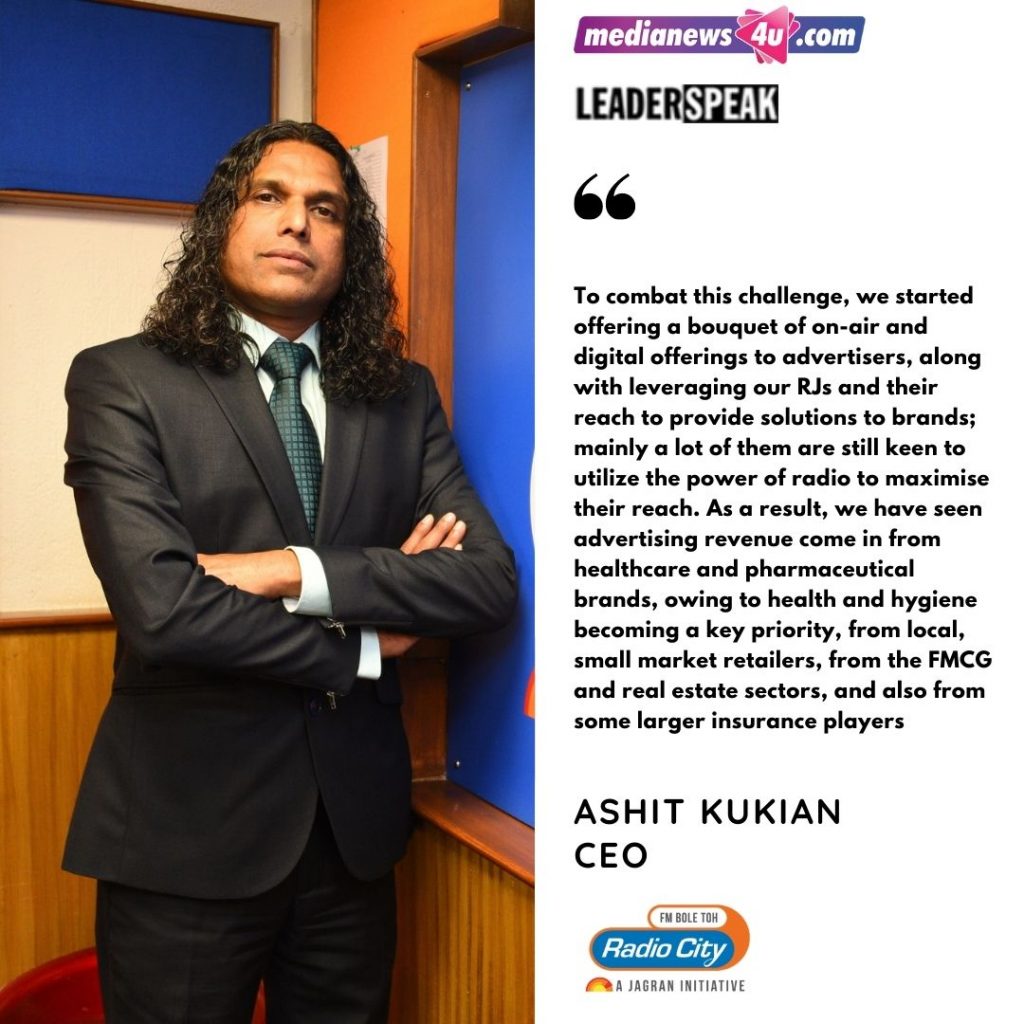
On the people front, we were connected with all our employees on a daily basis. From sharing personally penned encouragement letters from me to providing online doctor consultations for any medical requirement, we have made certain that our employees stay mentally and physically healthy while working from home.
How effectively have you used the lockdown period?
We had clearly earmarked tasks to each of our departments in this changed economic environment. Since business was low, departments which were linked to the revenue teams were reoriented towards other functions to bring in maximum efficiency in functioning of the organisation. We used our teams for further planning and came up with ideas to be implemented in the near future to ensure business continuity. We encouraged employees to upgrade themselves by attending industry webinars and value-adding their skills while they were at home.

Innovations and new opportunities during this crisis for the industry?
We are betting big on the digital aspect of our offerings and have already undertaken various innovative and engaging digital campaigns across our social media platforms to unite and entertain digizens during the lockdown. Whether it was Instagram LIVE sessions with celebrities, or the aforementioned Concert from Home with singers on Facebook, these campaigns were done in tandem with our on-air communication on radio. This has helped us generate a stupendous 280% growth of our social media reach numbers.
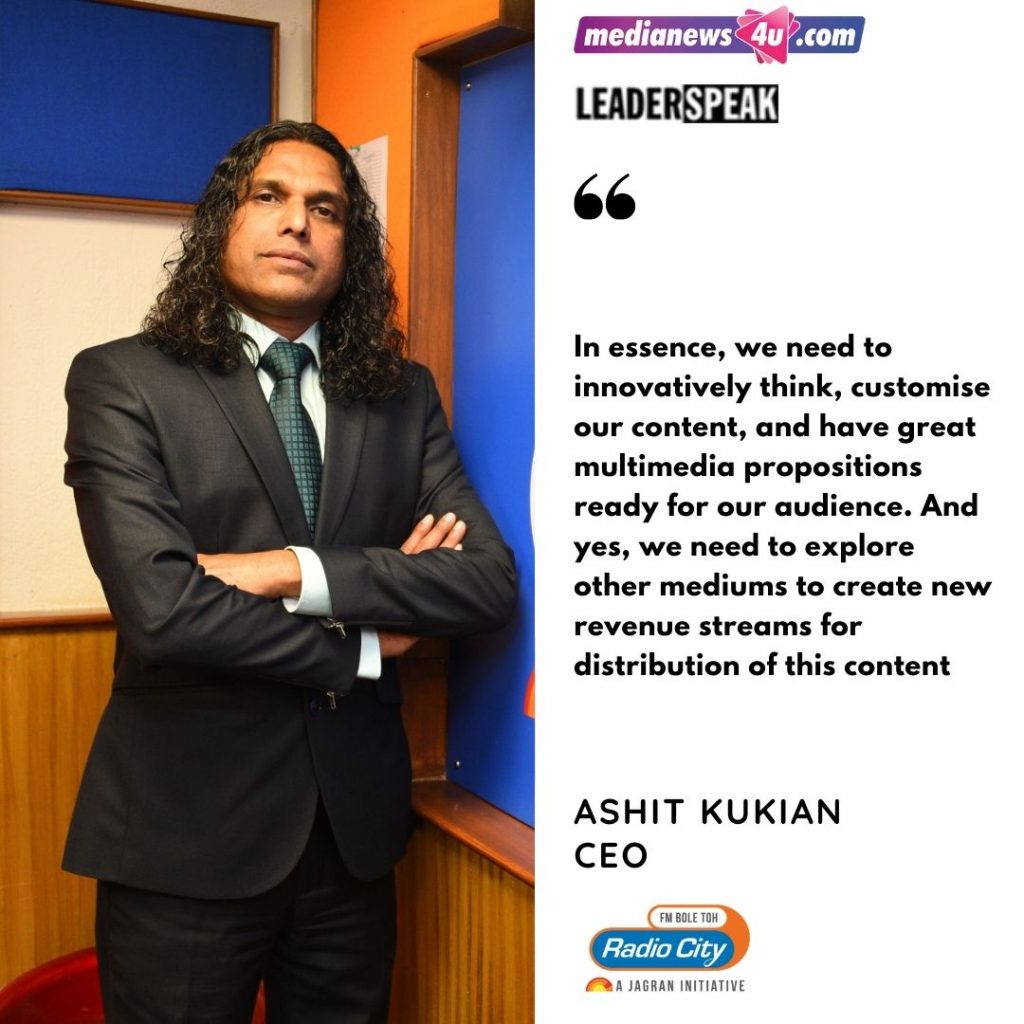
Content is also of utmost importance in our industry, so we need to keep creating more original content, keeping new demand in mind, to seamlessly engage our audience. Additionally, for businesses like ours, we need to clearly define new delivery platforms to leverage this content. For example, we have recently signed a 3-year licenced deal with Spotify to share more than 1400 episodes featuring 16 of our audio IPs. Our premium and award-winning audio IPs will target not only Spotify users in India, but also the diaspora that is on the audio streaming platform across the world.
In essence, we need to innovatively think, customise our content, and have great multimedia propositions ready for our audience. And yes, we need to explore other mediums to create new revenue streams for distribution of this content.


